Related Research Articles

René François Armand "Sully" Prudhomme was a French poet and essayist. He was the first winner of the Nobel Prize in Literature in 1901.
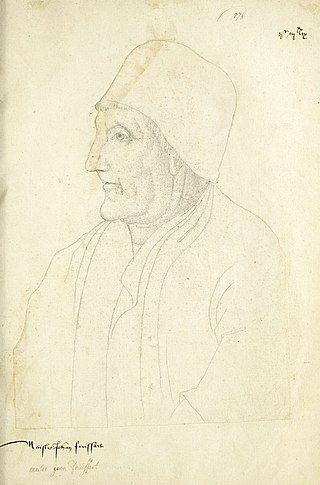
Jean Froissart was a French-speaking medieval author and court historian from the Low Countries who wrote several works, including Chronicles and Meliador, a long Arthurian romance, and a large body of poetry, both short lyrical forms as well as longer narrative poems. For centuries, Froissart's Chronicles have been recognised as the chief expression of the chivalric revival of the 14th-century kingdoms of England, France and Scotland. His history is also an important source for the first half of the Hundred Years' War.

Jean Chapelain was a French poet and critic during the Grand Siècle, best known for his role as an organizer and founding member of the Académie française. Chapelain acquired considerable prestige as a literary critic, but his own major work, an epic poem about Joan of Arc called "La Pucelle," (1656) was lampooned by his contemporary Nicolas Boileau-Despréaux.

Henri-Alexandre Wallon was a French historian and statesman whose decisive contribution to the creation of the Third Republic led him to be called the "Father of the Republic". He was the grandfather of psychologist and politician Henri Wallon.

Alexis Paulin Paris was a French scholar and author.

François Edouard Joachim Coppée was a French poet and novelist.
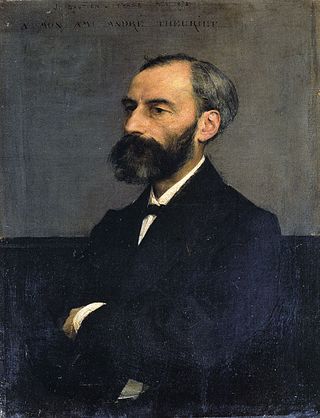
Claude Adhémar André Theuriet was a 19th-century French poet and novelist.

Évariste Desiré de Forges, vicomte de Parny was a French poet.

Jean-Marc Nattier was a French painter. He was born in Paris, the second son of Marc Nattier, a portrait painter, and of Marie Courtois, a miniaturist. He is noted for his portraits of the ladies of King Louis XV's court in classical mythological attire.

Henri-Joseph Harpignies was a French landscape painter of the Barbizon school.

Francis Vielé-Griffin, was a French symbolist poet. He was born at Norfolk, Virginia, USA, the son of General Egbert Ludovicus Viele, and moved to France with his mother in 1872.
The 12th-century chanson de geste of Garin le Loherain, together with the slightly later Girbert de Metz, form the core and initial parts of the so-called Lorraine cycle, which was expanded in the 13th century by a prequel and three sequels. The cycle is one of the fiercest and most sanguinary narratives left by the trouvères. This local cycle of Lorraine appears to have a historical basis. Although the actions as recorded cannot be identified with specific historical events, the poems are valuable depictions of the savage feudal wars in the 11th and 12th centuries.
Jean Lemaire de Belges was a Walloon poet and historian, and pamphleteer who, writing in French, was the last and one of the best of the school of poetic 'rhétoriqueurs' (“rhetoricians”) and the chief forerunner, both in style and in thought, of the Renaissance humanists in France and Flanders.
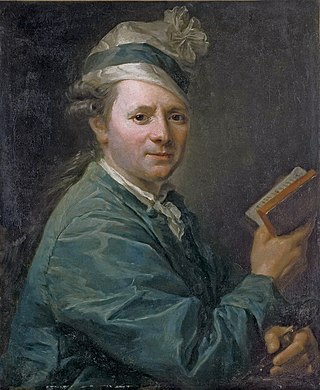
Gabriel Sénac de Meilhan was a French writer. He witnessed the beginning of the French Revolution in Paris, but soon emigrated in 1790 to London and then to Aachen. He wrote a novel, L'Émigré, in 1793. In 1792 he was invited by Catherine II of Russia to become the imperial historiographer, but Catherine was displeased by his manners and dismissed him.
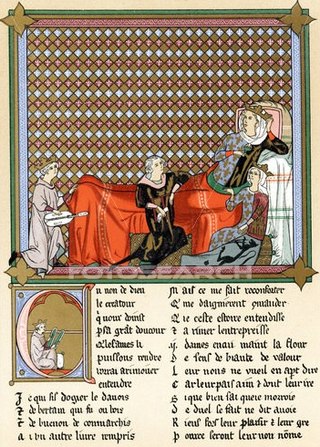
Adenes le Roi, was a French minstrel or trouvère. He was a favourite of Henry III, duke of Brabant, and he remained at court for some time after the death of his patron in 1261.

Georges Chastellain, Burgundian chronicler and poet, was a native of Aalst in Flanders. Chastellain's historical works are valuable for the accurate information they contain. As a poet he was famous among his contemporaries. He was the great master of the school of grands rhétoriqueurs, whose principal characteristics were fondness for the most artificial forms and a profusion of Latinisms and graecisms.

The Archdiocese of Cambrai is a Latin Church ecclesiastical jurisdiction or archdiocese of the Catholic Church in France, comprising the arrondissements of Avesnes-sur-Helpe, Cambrai, Douai, and Valenciennes within the département of Nord, in the region of Nord-Pas-de-Calais. The current archbishop is Vincent Dollmann, appointed in August 2018. Since 2008 the archdiocese has been a suffragan of the Archdiocese of Lille.
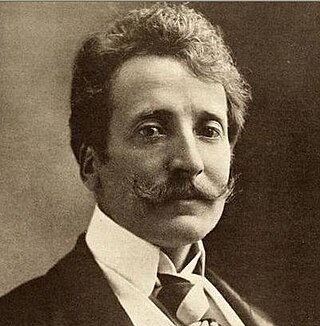
Georges Raymond Constantin Rodenbach was a Belgian Symbolist poet and novelist.
Conon de Béthune was a French crusader and trouvère poet who became a senior official and finally regent of the Latin Empire of Constantinople. Alternative spellings of his name include Cono, Coesnes, Quenes, Conain, and Quenon.

Hégésippe Moreau was a French lyric poet. From birth, he was called by the last name of his biological father (Moreau) and took on the pseudonym Hégésippe when he first began publishing poetry in 1829. In the imagination of the French romantics and the 19th century public, the difficulties of Hégésippe Moreau's life and his untimely death made him a romantic equivalent of the earlier poets Thomas Chatterton, Nicolas Joseph Laurent Gilbert and Jacques Clinchamps de Malfilâtre. This romantic myth was solidified by the publication of his complete works, together with the works of Gilbert and a list of poets who died of hunger, in 1856; the 1860 edition of his works included an important biographical preface by Sainte-Beuve.
References
- 1 2 3 Chisholm 1911.
Attribution:
- This article incorporates text from a publication now in the public domain : Chisholm, Hugh, ed. (1911). "Herman de Valenciennes". Encyclopædia Britannica . Vol. 13 (11th ed.). Cambridge University Press. p. 365.